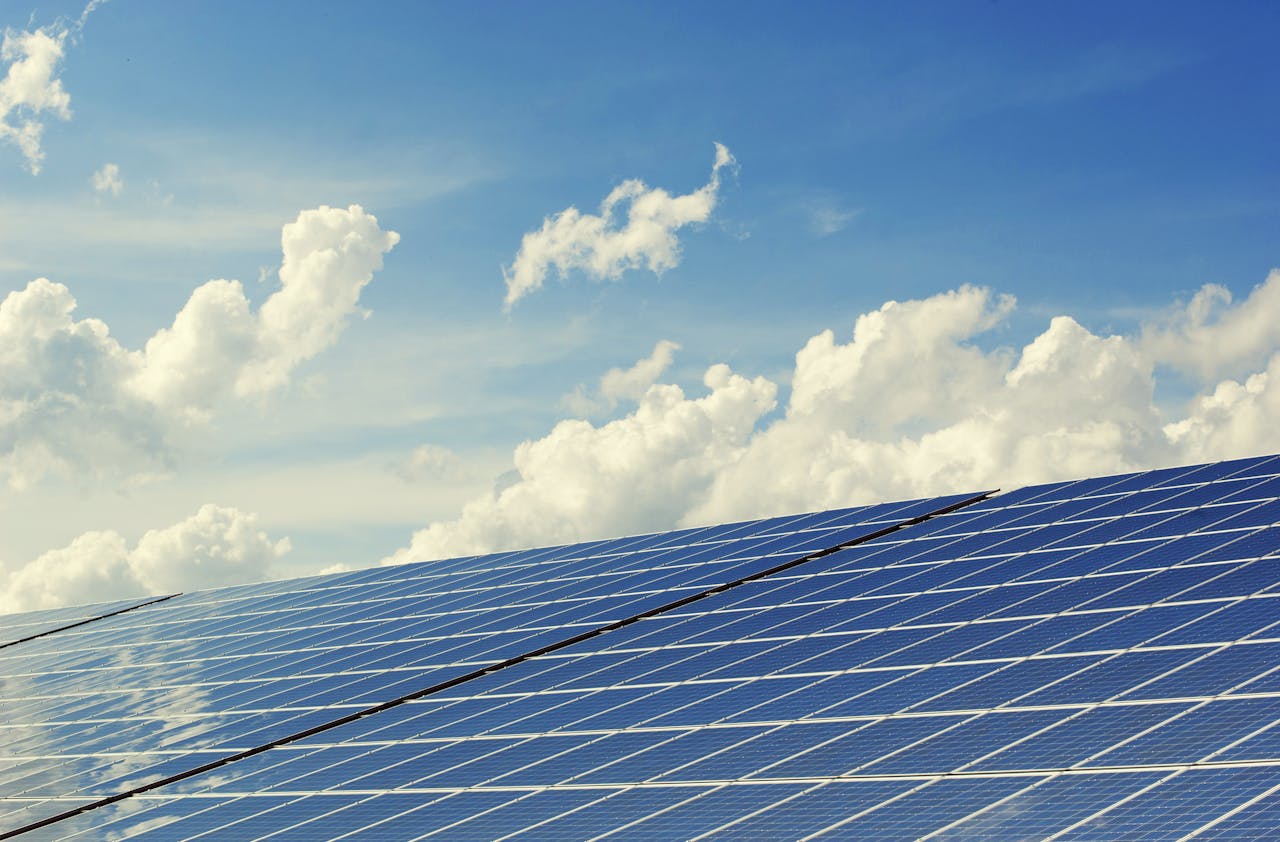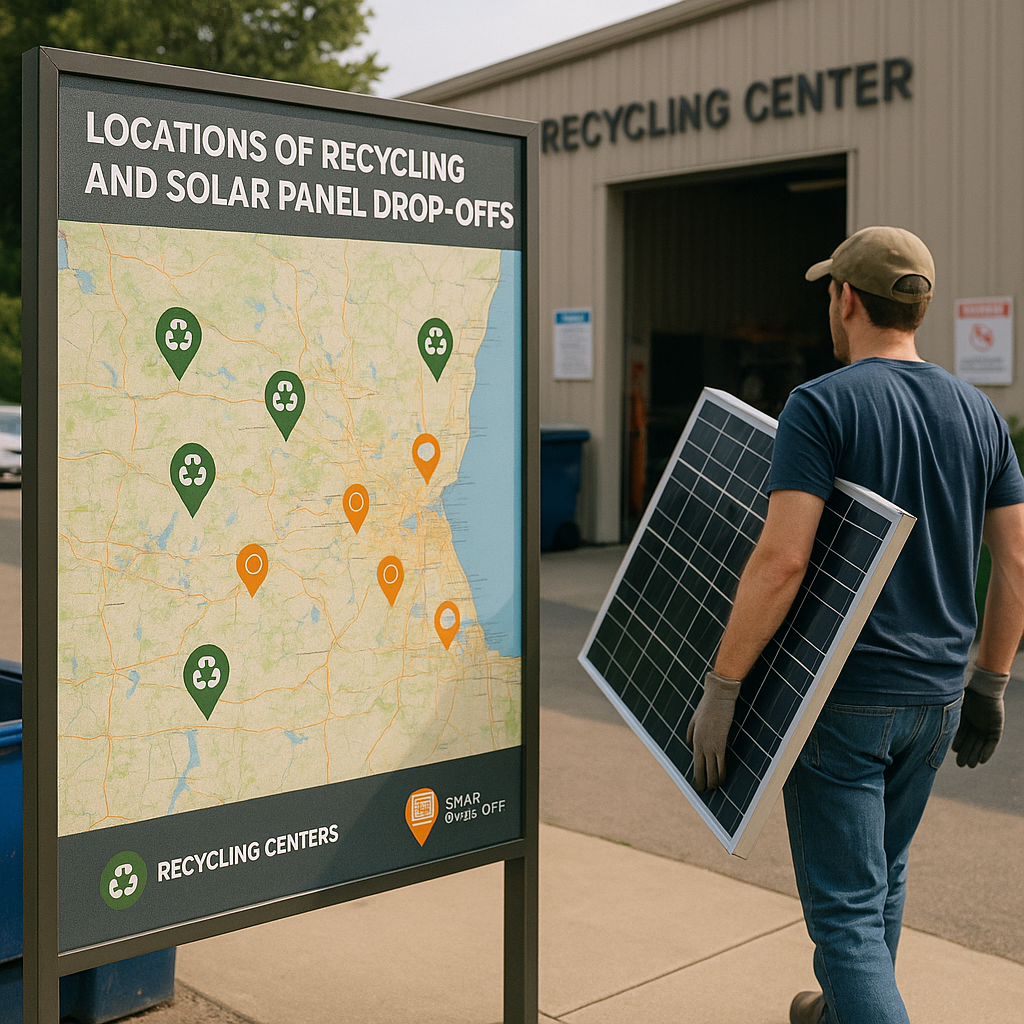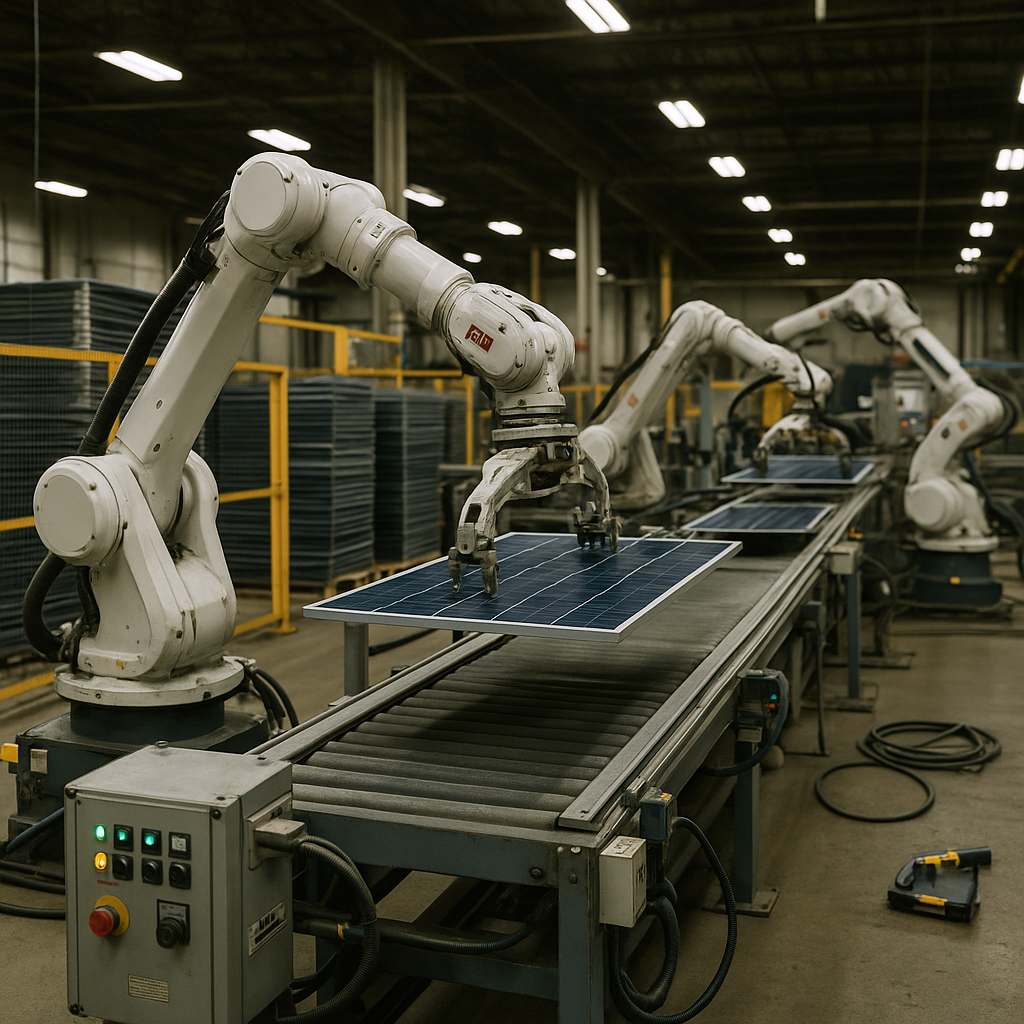5901 Botham Jean Blvd, Dallas, TX 75215
How to Recycle Solar Panels: An Introduction
June 22, 2025By 2050, the world is expected to produce approximately 78 million metric tons of discarded solar panels, equivalent to the weight of 77,000 Airbus A380 airplanes. As the renewable energy sector continues to grow rapidly, addressing this waste challenge becomes increasingly urgent.
Solar panel recycling is emerging as a critical solution for environmental sustainability. With most solar panels having a lifespan of 25-30 years, many early installations are now nearing retirement. Without proper recycling infrastructure, these panels risk ending up in landfills where they can leach toxic materials.
Fortunately, over 90% of a solar panel’s composition consists of highly reusable materials, including glass, aluminum, silicon, and copper. Recycling these components not only prevents environmental contamination but also conserves valuable resources that can be reincorporated into new solar panels or other products. This circular approach strengthens the overall sustainability of the solar industry.
What Components of Solar Panels Can Be Recycled?

Solar panels contain various recyclable materials. Nearly 75% of a solar panel’s weight is glass, which already has well-established recycling processes. Besides glass, several other components can be effectively recovered and repurposed.
The main recyclable components of solar panels include:
- Glass sheets (about 75% of panel weight)
- Aluminum frames (100% recyclable)
- Copper wiring and conductive materials
- Silicon solar cells
- Metal components and junction boxes
- Plastic components like the backing material
Materials like aluminum frames, glass, and copper wiring are relatively easy to recycle using existing infrastructure. The aluminum frame is 100% reusable. Glass can be separated along a conveyor belt, with approximately 95% being recoverable for new products or applications.
However, recovering silicon solar cells presents a more significant challenge. These cells contain valuable materials but require specialized processes to extract them efficiently. Recycling typically involves thermal processing at about 500 degrees Celsius to separate the cells from other components. Once isolated, the silicon wafers can be etched and smelted into reusable slabs, with about 85% of the material being recoverable.
Some solar panels also contain small amounts of precious metals like silver, as well as other materials such as lead, tin, and antimony. While these materials exist in minimal quantities per panel, they become significant when considering the millions of panels that will eventually need recycling.
The real challenge with solar panel recycling isn’t whether the materials can be recycled—technically, all components can be—but rather developing cost-effective processes to separate these materials. Current recycling costs range from $15 to $45 per module, whereas landfill disposal might only cost $1 to $5. This economic disparity presents a significant barrier to widespread solar panel recycling in the United States.
Other components of solar power systems can also be recycled. Inverters may be processed similarly to electronic waste, racking systems can be recycled with scrap metals, and battery backup systems can typically be handled through existing battery recycling programs.
The potential value of materials recovered from end-of-life solar panels is substantial. By 2030, the International Renewable Energy Agency estimates that recoverable raw materials from recycled panels globally could be worth approximately $450 million.
As the solar industry continues to grow, developing efficient recycling technologies will become increasingly important to maximize resource recovery and minimize environmental impact.
| Component | Recycling Rate (%) |
|---|---|
| Glass | 95% |
| Aluminum | 100% |
| Silicon | 85% |
| Silver | 96.13% |
| Copper | Varies |
How Does the Solar Panel Recycling Process Work?

Solar panel recycling follows a structured series of steps to maximize material recovery and minimize waste. The process transforms end-of-life panels into valuable resources. Most recycling operations can recover up to 95% of materials from retired solar panels.
Collection and Transportation
The recycling journey begins with the collection of decommissioned solar panels from residential, commercial, and utility-scale installations. Specialized logistics teams transport these panels to dedicated recycling facilities designed to handle photovoltaic waste.
Efficient collection systems are crucial to prevent panels from ending up in landfills. The transportation phase requires careful handling to avoid further damage to panels that may contain hazardous materials.
Dismantling and Component Separation
Upon arrival at recycling facilities, workers begin the meticulous disassembly process. First, they remove the aluminum frames, which are easily recyclable. The junction boxes and external wiring are detached for separate processing.
Specialized equipment then separates the glass from the encapsulant material. This critical step uses thermal or mechanical techniques to break the bond between the glass and the ethylene vinyl acetate (EVA) sheets that hold the solar cells.
The glass, which comprises about 75% of a typical solar panel, is carefully extracted and cleaned for reuse in new products. The separation process requires precision to maintain material purity.
Material Processing and Recovery
After dismantling, the remaining components undergo further processing. The materials are sorted through mechanical or chemical methods. Silicon solar cells are processed to extract valuable metals like silver and copper.
Mechanical recycling involves shredding and physically separating materials using techniques such as crushing, sifting, and air classification. Chemical recycling uses specialized solutions to dissolve certain components and extract precious materials.
Advanced facilities employ thermal processing, where controlled heating burns off polymers and adhesives. This method facilitates the recovery of silicon and other metals without contamination.
End Products and Material Reuse
The recycling process yields several valuable materials. Recovered aluminum is melted and used in new manufacturing. Processed glass becomes cullet for various applications, including new solar panels.
Silicon extracted from solar cells can be refined for use in new photovoltaic products. Copper and silver recovered from the conductive elements have significant market value and can be used across industries.
The plastic components are typically processed into raw materials for new products or used as fuel in energy recovery systems. This comprehensive approach ensures minimal waste enters landfills.
| Material | Percentage of Panel Weight | Applications |
|---|---|---|
| Glass | ~75% | New panels, construction materials |
| Aluminum | 100% recyclable | New frames, various industries |
| Copper | – | Electrical wiring, various industries |
| Silicon | 85% recoverable | New photovoltaic cells |
| Silver | – | Electronics, new solar cells |
Where Can You Recycle Solar Panels?

Recycling options for solar panels are still limited across the United States, especially for individual homeowners. The infrastructure hasn’t kept pace with the rapid adoption of solar technology. It’s best to contact your original solar installer or panel manufacturer directly, as many have take-back programs or can guide you to recycling facilities.
Several companies specialize in solar panel recycling. EnergyBin connects businesses within the solar industry to offer solutions for repair, resale, and recycling of panels. We Recycle Solar operates processing plants in New York and Arizona, using mechanical and chemical methods to extract resources from end-of-life panels. Veolia, a global environmental services company, has pioneered solar recycling in Europe and partners with PV Cycle to efficiently collect and recycle panels.
The contrast between U.S. and European approaches to solar panel recycling highlights different regulatory philosophies. In Europe, waste management legislation was amended in 2012 to include photovoltaic modules, requiring manufacturers to recycle their products at end-of-life. This producer responsibility model has created a robust recycling infrastructure. The European Recycling Network includes specialized facilities in Germany, France, and Belgium that process thousands of tons of solar materials annually.
In contrast, the United States lacks federal regulations specifically for PV module recovery. Only some states have systems under the Solar Energy Industries Association’s National Recycling Program. This regulatory gap, combined with economic challenges—recycling a solar panel costs $20-30 versus $1-2 for landfill disposal—creates significant barriers to widespread recycling adoption.
For Canadian consumers, options are even more limited. Some Canadian recycling companies can ship waste panels to U.S. facilities, but this adds complexity and cost. Without coordinated legislation like Europe’s, North Americans risk sending millions of solar panel components and potentially toxic materials to landfills in the coming years.
Conclusion: The Future of Solar Panel Recycling

As the solar industry continues its expansion, developing efficient solar panel recycling systems has become vital. The increasing volume of panels reaching end-of-life—estimated at 78 million tonnes globally by 2050—presents both a challenge and an opportunity. Advanced recycling technologies now enable recovery of up to 95% of semiconductor materials and 90% of glass from decommissioned panels, significantly reducing the environmental footprint of solar energy.
The economic benefits of recycling are equally compelling. By 2030, the global value of recovered materials from recycled solar panels is projected to reach $450 million, equivalent to raw materials for approximately 60 million new panels. This circular approach creates green jobs, conserves valuable resources like silicon, glass, and metals, and reduces production costs for new panels. Through continued innovation in recycling methods such as laser ablation and chemical processing, the solar industry is making significant strides toward true sustainability throughout the lifecycle of solar products.
For expert guidance on recycling your solar panels responsibly, contact Okon Recycling at 214-717-4083. Their specialized knowledge and sustainable recycling solutions ensure your decommissioned solar equipment contributes to a greener future rather than becoming environmental waste.
